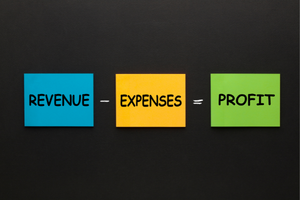Revenue, Profit and Business Analysis
February 17, 2022
Everybody loves talking about soaring revenue. Doubling revenue, tripling revenue, and having such and such % better revenue than last year are all nice songs to sing. It sounds great to everyone: prospects enjoy hearing about it, your employees get a sense of pride, and your marketing and salespeople have a field day with it. That song may even help you get “more revenue” this year. That’s all wonderful, right? Well maybe.
Revenue is one of the many ways you can evaluate the validity and competitive stance of a business. It doesn’t necessarily indicate how well a business is doing, though. Any given organization can have a very decent revenue structure, but what makes the organization valuable is the profitability factor. However, a complete business analysis goes beyond revenue to assess other key aspects of performance.
What’s the Difference Between Revenue and Profit?
Generally speaking, the greater the revenue, the more profitable a company should be—but this can be misleading. People logically figure that if a lot of money is coming in, the company must be doing well. This is simply not the case. Owners and managers who make the mistake of assuming this are opening themselves up to a huge risk of failure.
 There is nothing more disheartening than thinking you are making all of this money only to find that it has been a challenge to comfortably meet monthly expenses throughout the year. Often, the error of assuming money is “tied up in Accounts Receivable” can mask the reality that you are not making enough money to pay your bills. From another viewpoint, at tax time, it can be rather devastating to learn that the year has actually been miserable.
There is nothing more disheartening than thinking you are making all of this money only to find that it has been a challenge to comfortably meet monthly expenses throughout the year. Often, the error of assuming money is “tied up in Accounts Receivable” can mask the reality that you are not making enough money to pay your bills. From another viewpoint, at tax time, it can be rather devastating to learn that the year has actually been miserable.
The good news is that all you need to do is evaluate revenue vs. costs/expenses accurately year-round. Effective business analysis provides an accurate representation of what is happening in your business. A thorough profit analysis is key to understanding whether revenue is translating into actual gains. Without it, even strong revenue numbers can be misleading.
How Can Business Analysis Increase Visibility of Profit and Revenue?
To capture a strong financial analysis on paper, it is important to incorporate every aspect of your business. Additionally, it is critical to classify all elements so they can be broken down into manageable pieces for study. Business analysis helps to spot problem areas more easily and enables action to address issues for immediate implementation.
Various managers of the organization would be responsible for the different elements, which is another reason why it is important to break it up. If you are not making as much money (profit) as you would like, then all financial areas must be considered so that appropriate measures can be put into place with the appropriate people.
Breaking Down Revenue Sources
As an example, from a simple revenue point of view, you need to know where the revenue is coming from piece by piece. If you do temporary and direct hires, the first cut would be a split between these two types of revenue.

Next, do you do several types of placements within each of these groups (multiple lines of business)? Clerical, IT, Light Industrial, Accounting and Finance, etc., all need to be broken down into how much revenue from each.
After that, if you have multiple offices handling the business, break it down by office. Within each office, you have different types of individuals participating in the generation of revenue. Break out business by individual.
Analyzing and Understanding Costs
Once you have established exactly where and how the revenue stream flows, do the same with costs. Break out all costs in the same fashion. How deep you want to go with this depends on how your business is structured and what you think will be meaningful for analysis. Some types of businesses need to break out more finitely than others. This is something that you will need to decide.
When considering costs, ensure that you include general office, selling and administrative expenses. Without the inclusion of these, you still will not have an accurate depiction. Perhaps revenue is great, but you are spending too much on certain items.
Identifying High Expenses and Making Adjustments
 If you are unaware of where your big expenses are, then it is unlikely that you will be able to trim expenses appropriately. You unquestionably do not want to cut expenses that are highly contributing to revenue, or that would cause a problem in the generation of revenue. This is where breakouts become beneficial. Once broken out, costs must be compared, and contributions to revenue should be researched through business analysis.
If you are unaware of where your big expenses are, then it is unlikely that you will be able to trim expenses appropriately. You unquestionably do not want to cut expenses that are highly contributing to revenue, or that would cause a problem in the generation of revenue. This is where breakouts become beneficial. Once broken out, costs must be compared, and contributions to revenue should be researched through business analysis.
As an example, could you be saving money if you were to switch your phone carrier? If yes, would the new carrier allow you to accomplish your sales goals? Do you need all of those accounting people? If you reduced accounting staff, could the invoicing still go out accurately and in a timely fashion?
Is there something you could do or a tool you could use that would allow you to accomplish the same with less staff? What is the cost of the tool, length of implementation, ease of implementation and short and long-term benefits? It is possible that by spending a little money now, you can save a lot and significantly contribute to your bottom line almost immediately.
What Should Be Considered To Forecast Probability?
Other factors to consider that will significantly add to the precision with which you can examine and forecast profitability are:
- % of business procured from given customers
- top locations in which business is generated
- top positions being filled within given periods
- top skills in demand
- lost business/why lost/% of lost
- top referral sources
Inspection of multiple factors contributing to the revenue/cost breakdown is critical. It’s not all about dollars and cents from a certain standpoint. Profit analysis helps connect the dots between expenses and actual earnings, making it easier to see where adjustments are needed. Trend analysis can be significant in determining any number of facts that will aid in the decision-making process and lead to appreciably more profitability.
Data is Nothing Without Accurate Reporting
Business analysis is a challenging task but well worth the effort. The information is imperative to the successful operation of your business. Once the data exists, it is a matter of building the database within a business software solution and creating a means to report.
 It’s exciting to recognize that you can learn about your business quickly and easily. Why leave something as important as profitability to chance? Invest time and talent wisely for optimal business success. Make sure your data is as accurate as possible with a business software solution like Ultra-Staff EDGE.
It’s exciting to recognize that you can learn about your business quickly and easily. Why leave something as important as profitability to chance? Invest time and talent wisely for optimal business success. Make sure your data is as accurate as possible with a business software solution like Ultra-Staff EDGE.
How Ultra-Staff EDGE Drives Profitability Business Analysis in Staffing
For staffing companies, a clear understanding of profitability extends beyond simply tracking overall revenue. Breaking down the numbers in staffing isn’t just useful—it’s the only way to really see where the money is coming from and where it’s slipping away. A solid business analysis means looking at revenue and costs for each type of placement, each client, and even each recruiter. Profit analysis sharpens this process, helping firms pinpoint where revenue is truly driving profitability and where it’s falling short. That level of detail shows which parts of the business are thriving and where things might be dragging down profits.
With this kind of deep dive into the numbers, staffing firms can figure out exactly where to focus their energy, whether that’s adjusting pricing, shifting resources, or doubling down on the most profitable clients. Knowing the specifics helps avoid guesswork and makes decisions a whole lot easier.
A strong reporting tool, like Ultra-Staff EDGE, makes this process smoother. It helps staffing firms track performance accurately, build smart strategies, and take action to boost both revenue and profit. In an industry where competition is fierce, having clear, reliable data isn’t just helpful; it’s the difference between staying ahead or falling behind.
Terri Roeslmeier is president and CEO of Automated Business Designs, Inc., software developers of Ultra-Staff EDGE software for the staffing industry. Ultra-Staff EDGE is a full-featured software solution with components for front and back office, web portals, onboarding, mobile, data analytics, and scheduling. For more information on Ultra-Staff EDGE, go to www.abd.net.
Get Started Today
Ultra-Staff EDGE is the most complete front and back-office solution in the industry. Ultra-Staff EDGE offers a customizable user experience to make staffing software and recruiting more efficient than ever.
What you will experience in an Ultra-Staff EDGE demo:
- A personalized demonstration of the software designed specifically for your company and industry
- An overview of key features and functionality to see how your entire team would utilize Ultra-Staff EDGE
- A powerful, unmatched ATS and CRM solution that will help your company increase profitability
- How Ultra-Staff EDGE users benefit from an all-in-one solution with Front and Back Office, Web Portals, OnBoarding, Mobile, Data Analytics, and more
Written by Terri Roeslmeier
 Terri Roeslmeier is the Founder and CEO of Automated Business Designs and has been servicing the staffing industry since 1982 with the latest staffing software innovations.
Terri Roeslmeier is the Founder and CEO of Automated Business Designs and has been servicing the staffing industry since 1982 with the latest staffing software innovations.

